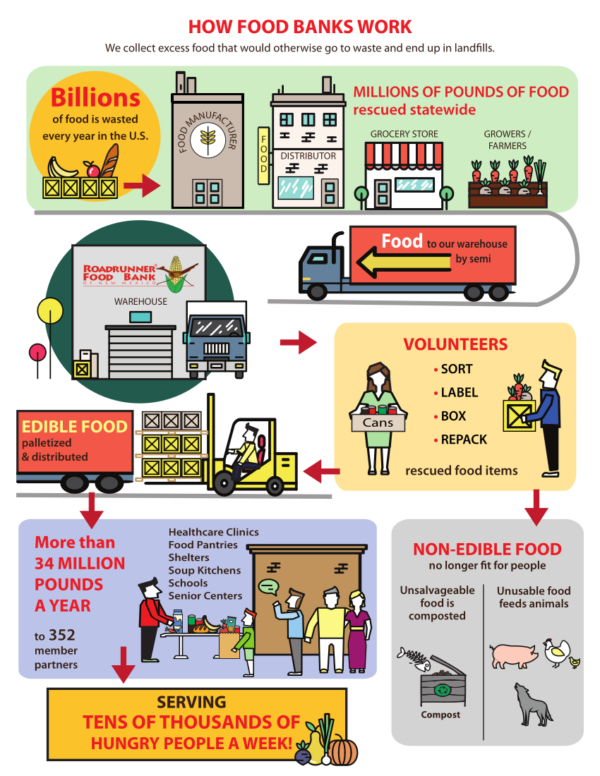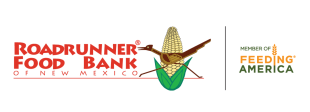HOW FOOD BANKS WORK

Food banks act as food storage and distribution hubs for smaller front-line agencies that are made of up food pantries, soup kitchens, group homes, shelters, schools, senior centers, low-income senior housing, healthcare sites and more. Food banks like Roadrunner Food Bank collect, source, warehouse, transport and distribute a variety of donated and purchased food items, produce, and other grocery products.
A majority of the food collected by food banks occurs through a process known as food rescue. Food rescue captures unwanted and excess food from the food industry, namely quality food items that would be discarded into the landfill otherwise. Roadrunner Food Bank captures food items from food distributors, manufacturers, grocery stores and even local growers and farms. The food is brought back to our warehouse and then sorted and prepped by volunteers.
The items are then inventoried and can be “checked out” from our warehouse through an online ordering system. Staff then pull orders and prepare the food for delivery by tractor trailer to hundreds of member partners across the state. These hundreds of partners provide meals to eat at a site such soup kitchens or shelters, or provide bags of groceries for low-income families to take home and prepare themselves. A majority of member partners are food pantry like organizations.
Each year this statewide hunger-relief network provides more than 34 million pounds of food to help feed children, seniors, families, and adults. In total, we feed 70,000 hungry New Mexicans each week through this statewide food bank network. You can learn more about how food banks work through our nationwide food bank network, Feeding America.
